Abstract
A difference in female pheromone production and male behavioral response has previously been found in two populations of the turnip moth, Agrotis segetum, originating from Sweden and Zimbabwe, respectively. In this study, we investigated the pheromone response of antennal lobe interneurons of males of the two populations by intracellular recordings, stimulating with single pheromone components and various inter- and intra-populational pheromone blends. Three major physiological types of antennal lobe neurons were established in the two populations according to their responses to different stimuli. One type responded broadly to almost all the stimuli tested. The second type responded selectively to some of the single components and blends. The third type did not respond to any single components but did respond to certain blends. Furthermore, some neurons of the second and third type recognized strain specific differences in ratios between pheromone components. Both projection neurons and local interneurons were found among these three types. Two pheromone responding bilateral projection neurons are reported for the first time in this paper.
Full text
PDF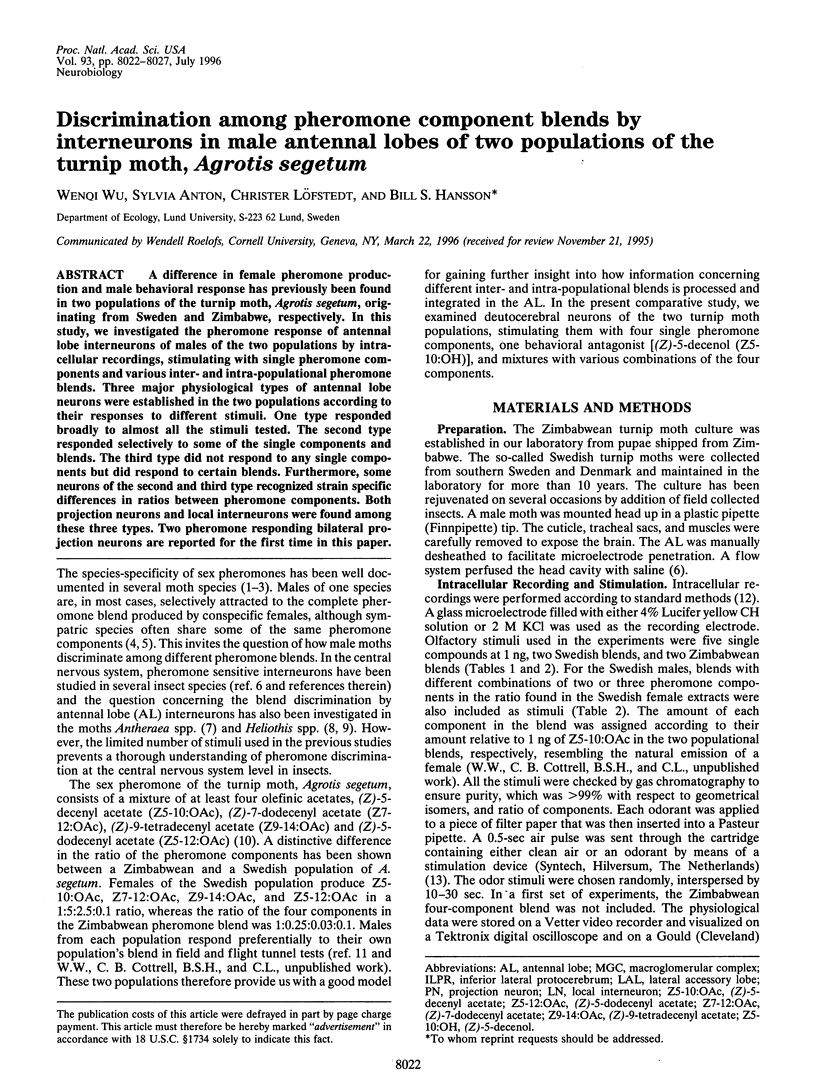

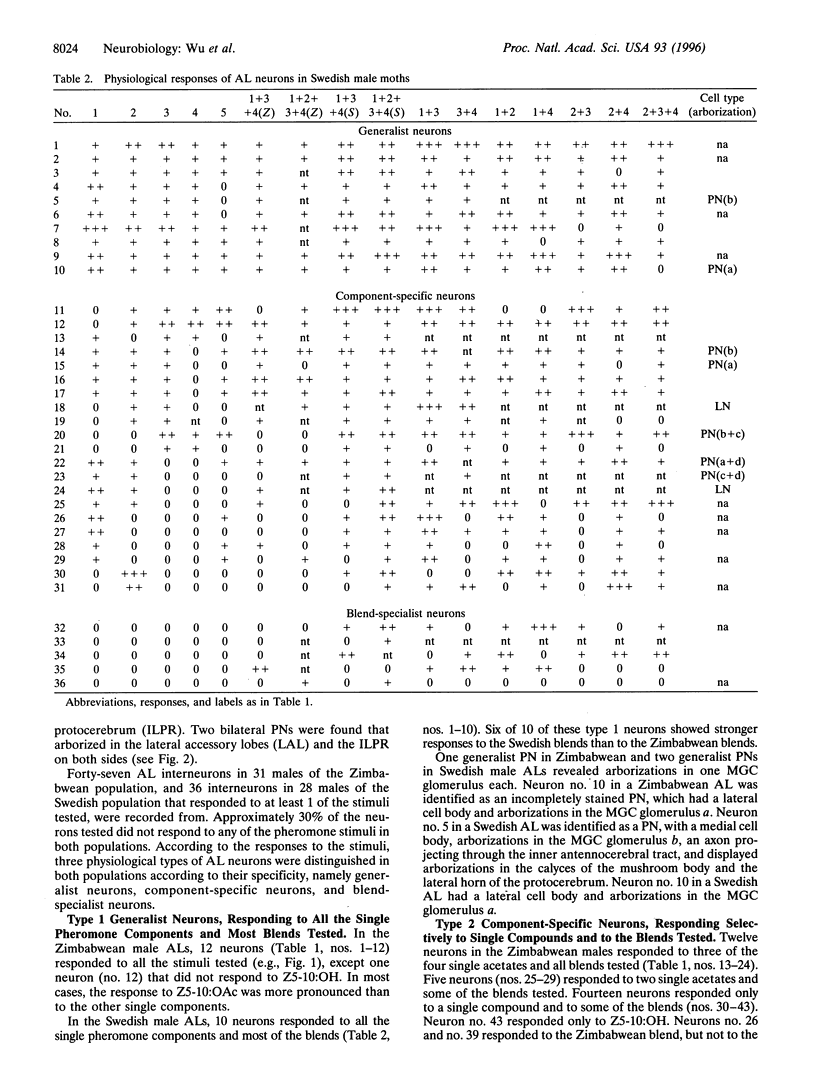
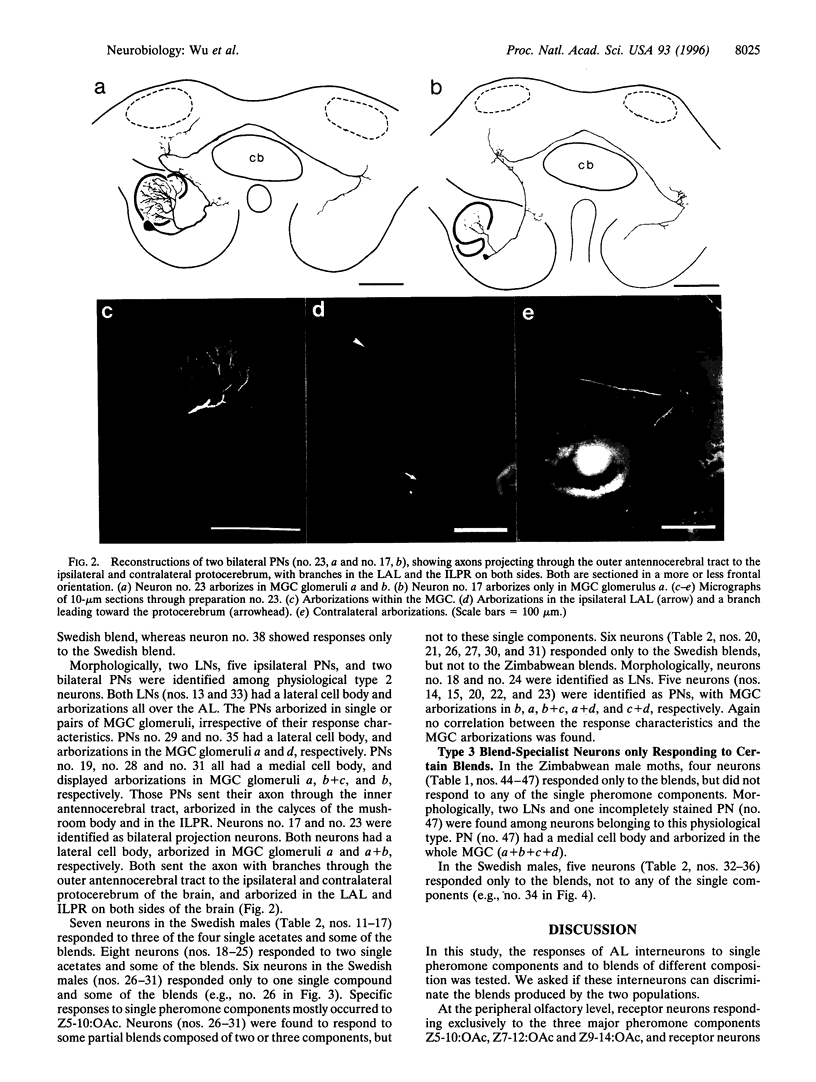
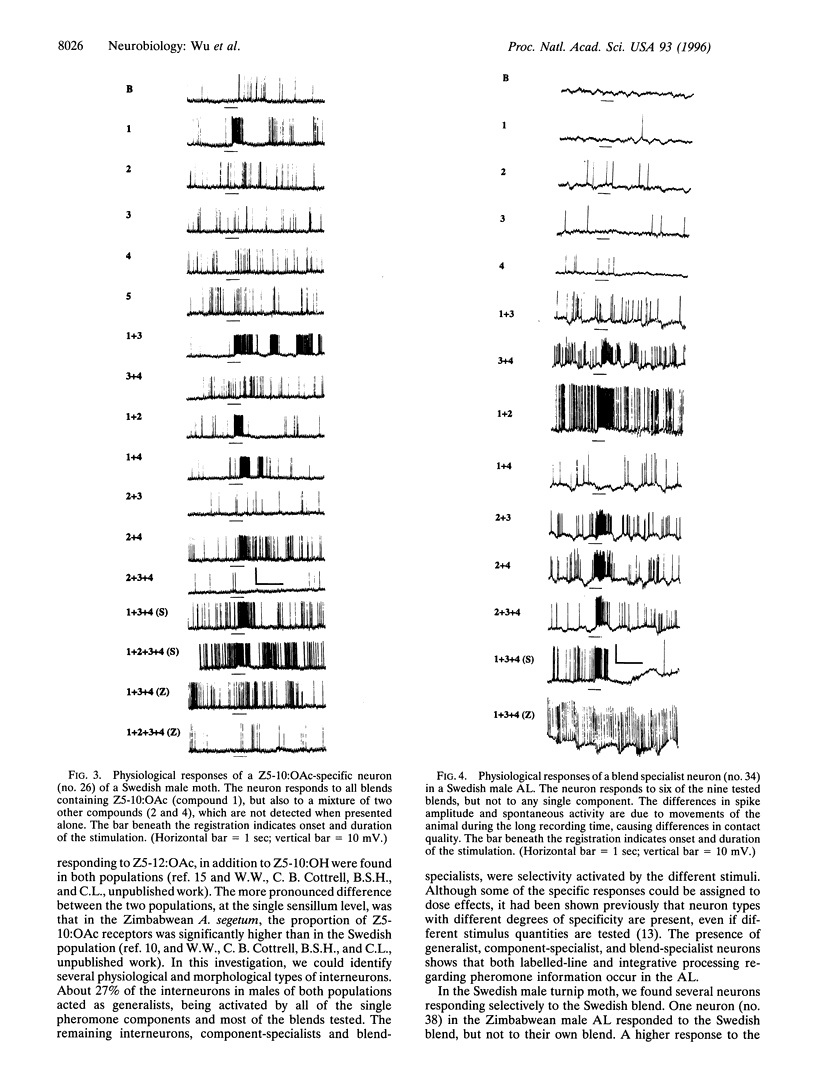
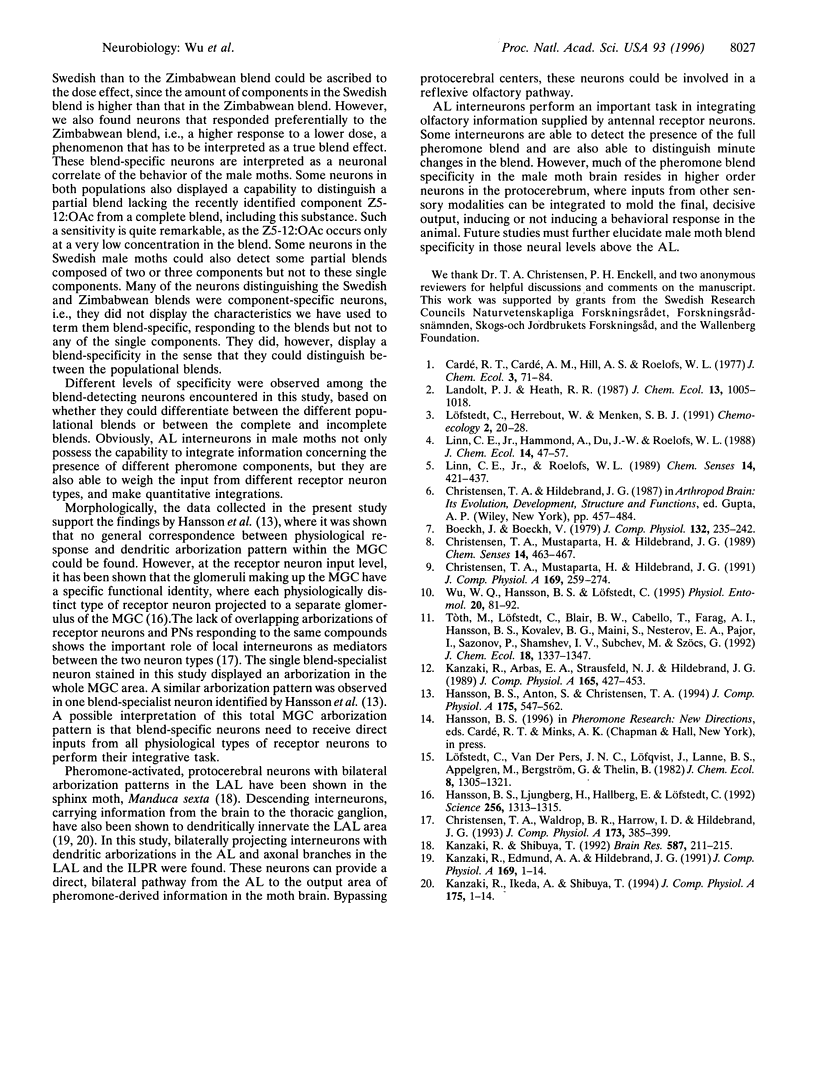
Images in this article
Selected References
These references are in PubMed. This may not be the complete list of references from this article.
- Christensen T. A., Waldrop B. R., Harrow I. D., Hildebrand J. G. Local interneurons and information processing in the olfactory glomeruli of the moth Manduca sexta. J Comp Physiol A. 1993 Oct;173(4):385–399. doi: 10.1007/BF00193512. [DOI] [PubMed] [Google Scholar]
- Hansson B. S., Ljungberg H., Hallberg E., Löfstedt C. Functional specialization of olfactory glomeruli in a moth. Science. 1992 May 29;256(5061):1313–1315. doi: 10.1126/science.1598574. [DOI] [PubMed] [Google Scholar]
- Heitz P. U., Landolt A. M., Zenklusen H. R., Kasper M., Reubi J. C., Oberholzer M., Roth J. Immunocytochemistry of pituitary tumors. J Histochem Cytochem. 1987 Sep;35(9):1005–1011. doi: 10.1177/35.9.2440942. [DOI] [PubMed] [Google Scholar]
- Kanzaki R., Arbas E. A., Hildebrand J. G. Physiology and morphology of descending neurons in pheromone-processing olfactory pathways in the male moth Manduca sexta. J Comp Physiol A. 1991 Jul;169(1):1–14. doi: 10.1007/BF00198168. [DOI] [PubMed] [Google Scholar]
- Kanzaki R., Arbas E. A., Strausfeld N. J., Hildebrand J. G. Physiology and morphology of projection neurons in the antennal lobe of the male moth Manduca sexta. J Comp Physiol A. 1989 Aug;165(4):427–453. doi: 10.1007/BF00611233. [DOI] [PubMed] [Google Scholar]
- Kanzaki R., Shibuya T. Long-lasting excitation of protocerebral bilateral neurons in the pheromone-processing pathways of the male moth Bombyx mori. Brain Res. 1992 Aug 7;587(2):211–215. doi: 10.1016/0006-8993(92)90999-p. [DOI] [PubMed] [Google Scholar]



